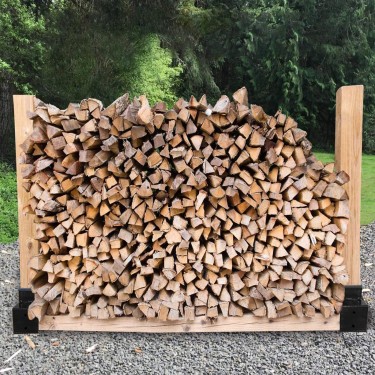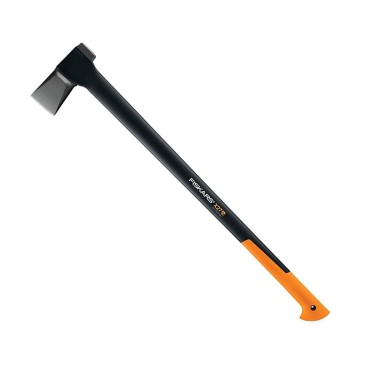Depending on size and power source, a log splitter can be a handy home helper or a high-production workhorse. Here's help choosing the right one.
Every editorial product is independently selected, though we may be compensated or receive an affiliate commission if you buy something through our links. Ratings and prices are accurate and items are in stock as of time of publication.
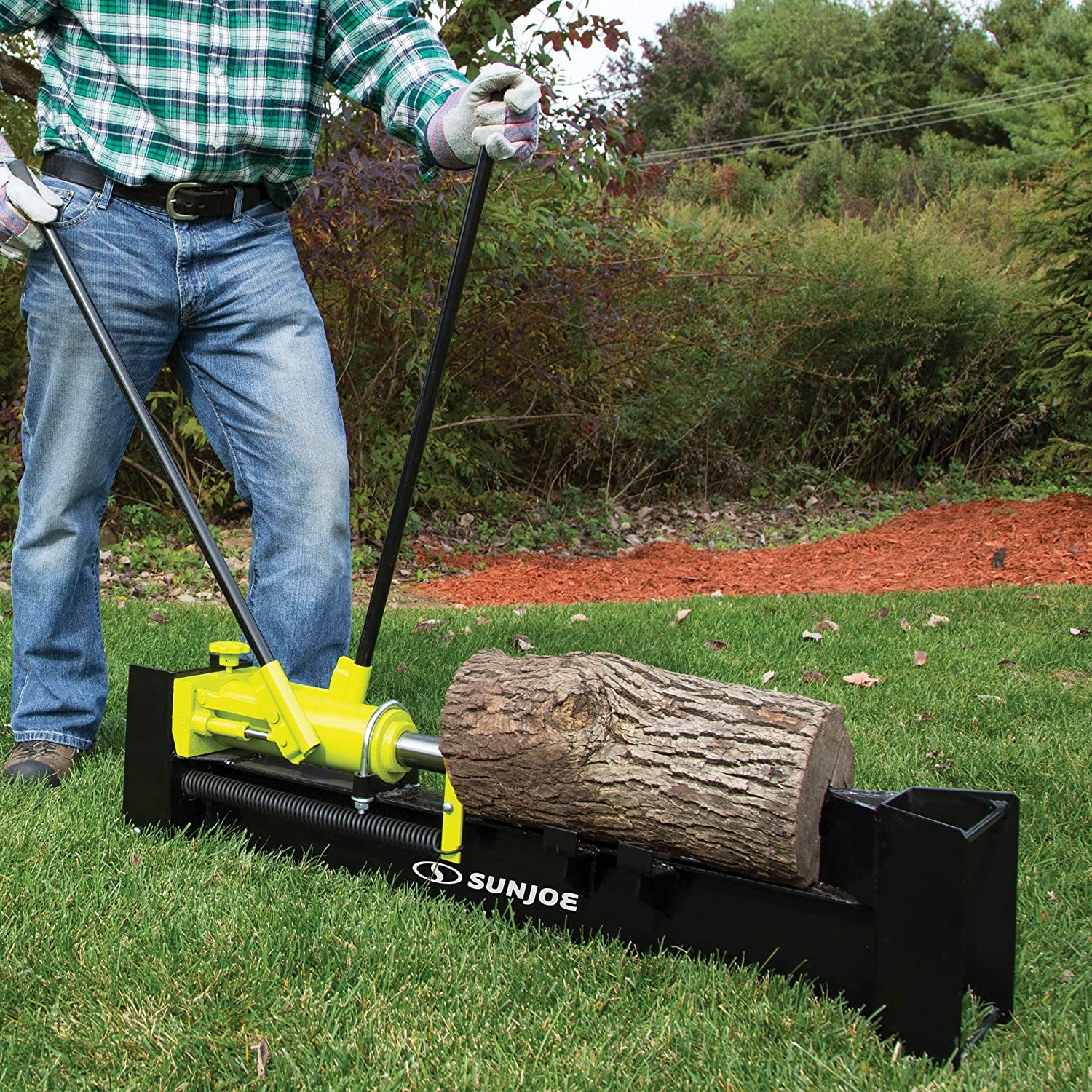
Buying a Log Splitter
If you like real wood fires — and who doesn’t? — you could benefit from a log splitter in several ways. It helps turn unwanted wood waste in your backyard into usable firewood, and it’s an essential tool if you have enough seasoned lumber to start a full-fledged firewood operation. On the other hand, you might just fancy having a handy tool to split kindling right on your hearth.
A log splitter doesn’t seem like a mainstream tool. But Vince Christofora, owner of Woodstock Hardware in Woodstock, New York, says log splitters (AKA wood splitters) are actually becoming more popular. He says this may be because firewood prices continue to rise and more and more people aspire to make their own.
For anyone with an abundance of logs to split and completely over the romantic notion of swinging an axe, Christofora says a log splitter can be an invaluable tool.
Log splitters can be manual, electric or gas-powered. They also can mount on the back of a tractor. Here are some things to consider when looking for the best log splitter for your purposes:
- Power: “Wood splitters are all about power — the splitting force they produce,” says Christofora. Power capabilities range from five tons to more than 40 tons. He recommends buying the most powerful one your budget allows.
- Maneuverability: This suffers as power increases. The most powerful gas-powered log splitters must be towed and often require two people for assembly. Smaller electric and manual ones are much easier to store and deploy.
- Maintenance: All tools require cleaning and lubrication. Electric and manual log splitters need far less maintenance than gas-powered or tractor-mount models.
- Log size: Each splitter has limits on the size of the logs it can cut. The most powerful gas-powered models can handle logs more than 24 inches long and weighing up to 100 pounds. Electric models can typically handle 20 inch logs no more than 10 inches in diameter.
- Type of wood: Underpowered machines can’t always handle dense hardwoods like oak and maple, especially if it’s unseasoned. Go for extra power if you’re splitting hardwoods.
- Ram return speed: Many log splitters have an automatic return feature that resets the ram after each split. The length of the return cycle helps determine the suitability of a particular model for large scale production.

Best Kindling Splitter
If you’re looking for a tool to make kindlingnear a campfire, the Inertia Wood Splitter is for you. This isn’t a hydraulic machine like most other log splitters. You supply the force yourself with a mini sledgehammer.
It requires less effort to use this tool than an axe. And because there’s no need to stabilize the log, there are fewer misses. Just set the log in place against the blade and swing away to split it into easily burnable kindling.
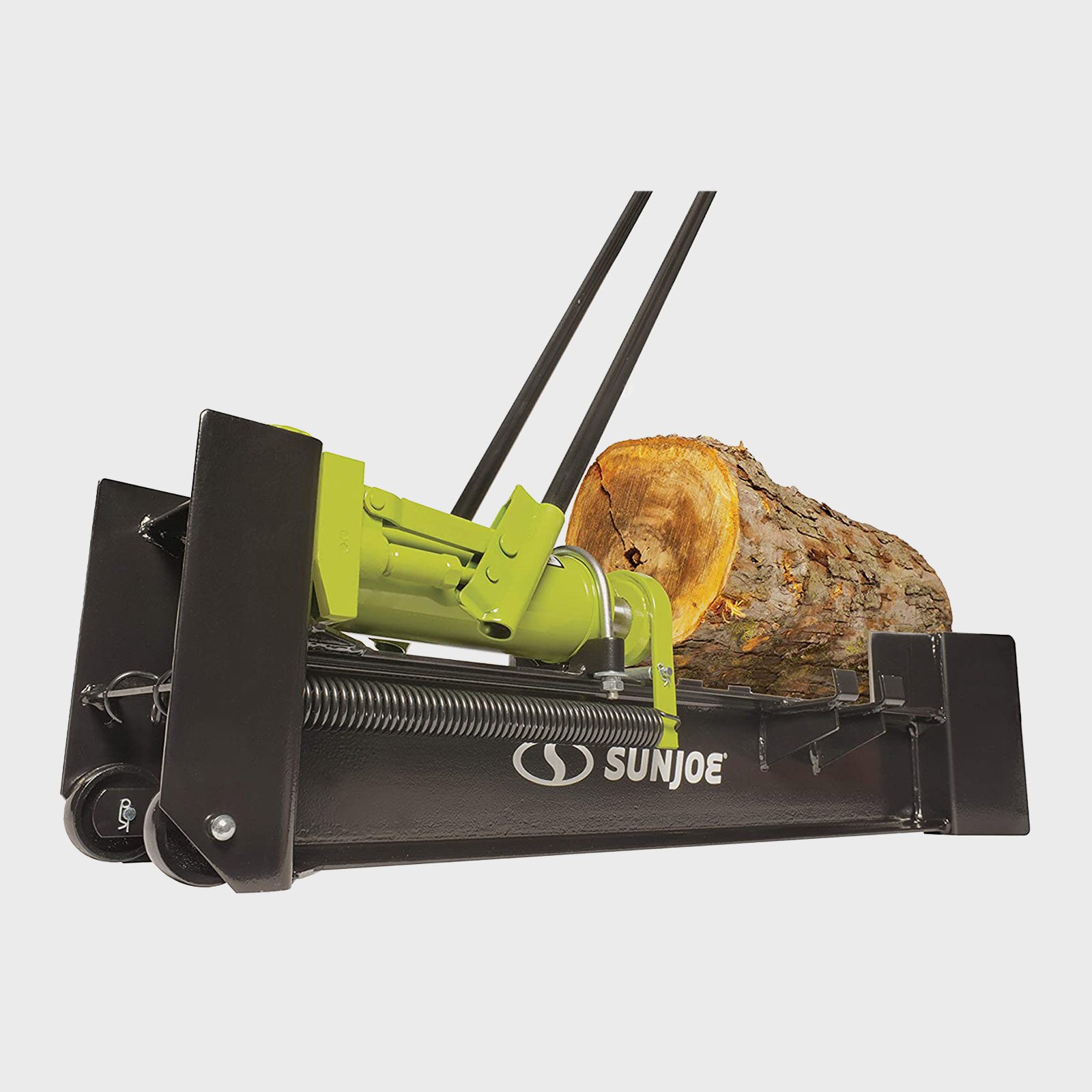
Best Manual Log Splitter
The Sun Joe Hydraulic Log Splitter is no kindling splitter. Capable of developing a force of 10 tons — more than some electric models — it turns 18-inch x 8-inch or smaller logs into firewood with a manual hydraulic ram.
It’s got wheels so it’s easy to move around the yard or the basement. You operate it by pumping a pair of handles. It’s a bit of a workout, but nowhere near as taxing as swinging an axe. And it’s a lot faster.

Best Heavy-Duty Electric Log Splitter
The Swisher Eco Split develops a respectable 22 tons of force and won’t ever stall because of a clogged carburetor. It’s a little pricey and must be towed on site. But it splits logs up to 25 inches long, bigger than most gas-powered models.
This splitter works in vertical and horizontal positions. And because it’s emission-free, you can set it up in your basement or garage and work out of the rain and snow.
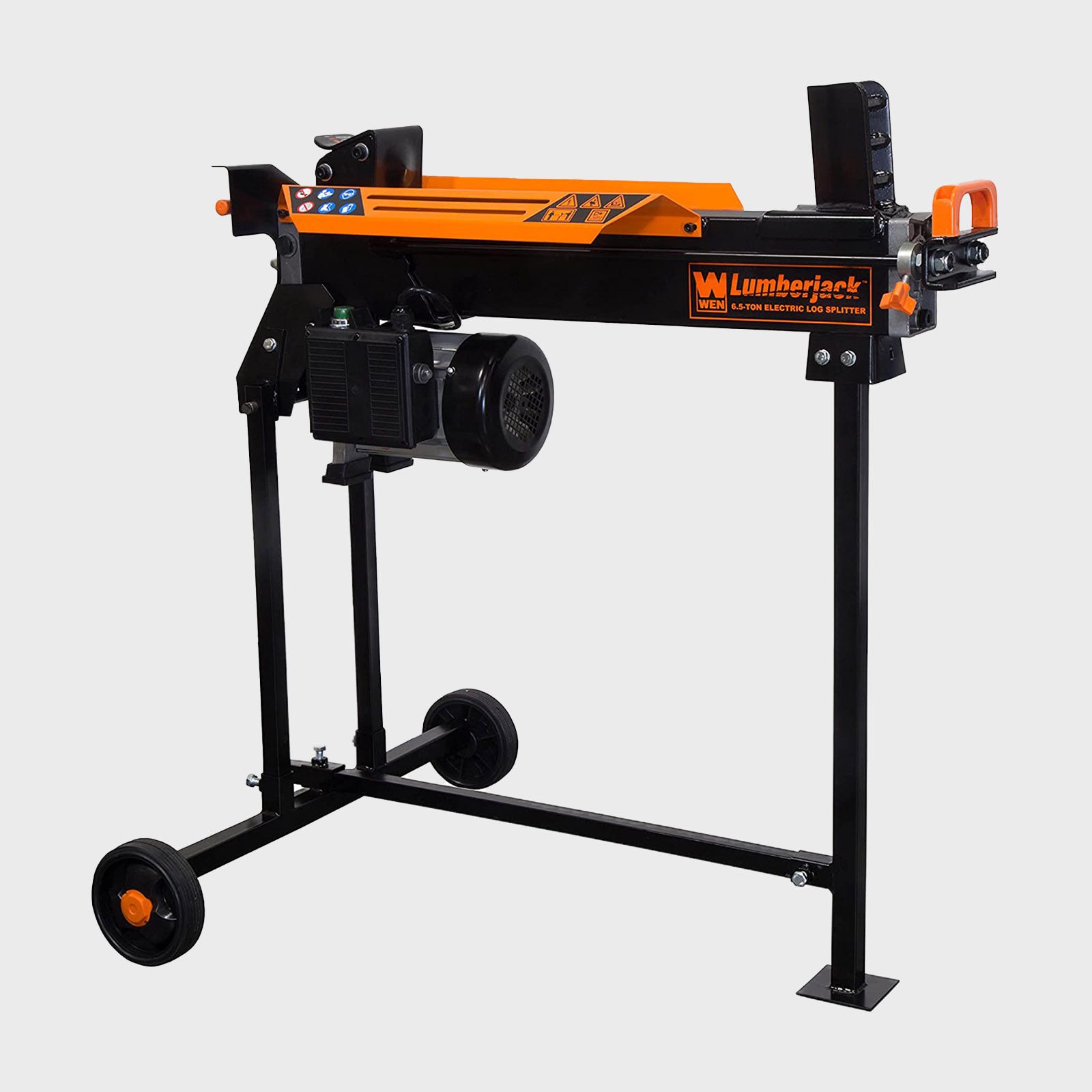
Best Light Duty Electric Log Splitter
Put your 20-inch x 10-inch or smaller log on the Wen 6.5-Ton Lumberjack and let its 15-amp motor do the work. This versatile machine has a 20-second cycle from beginning to full automatic retraction and can handle up to 120 logs an hour.
The unit is easy to use on its built-in wheels or with its 34-inch wheeled stand. The side-mounted cradle supports the log and prevents it from falling.
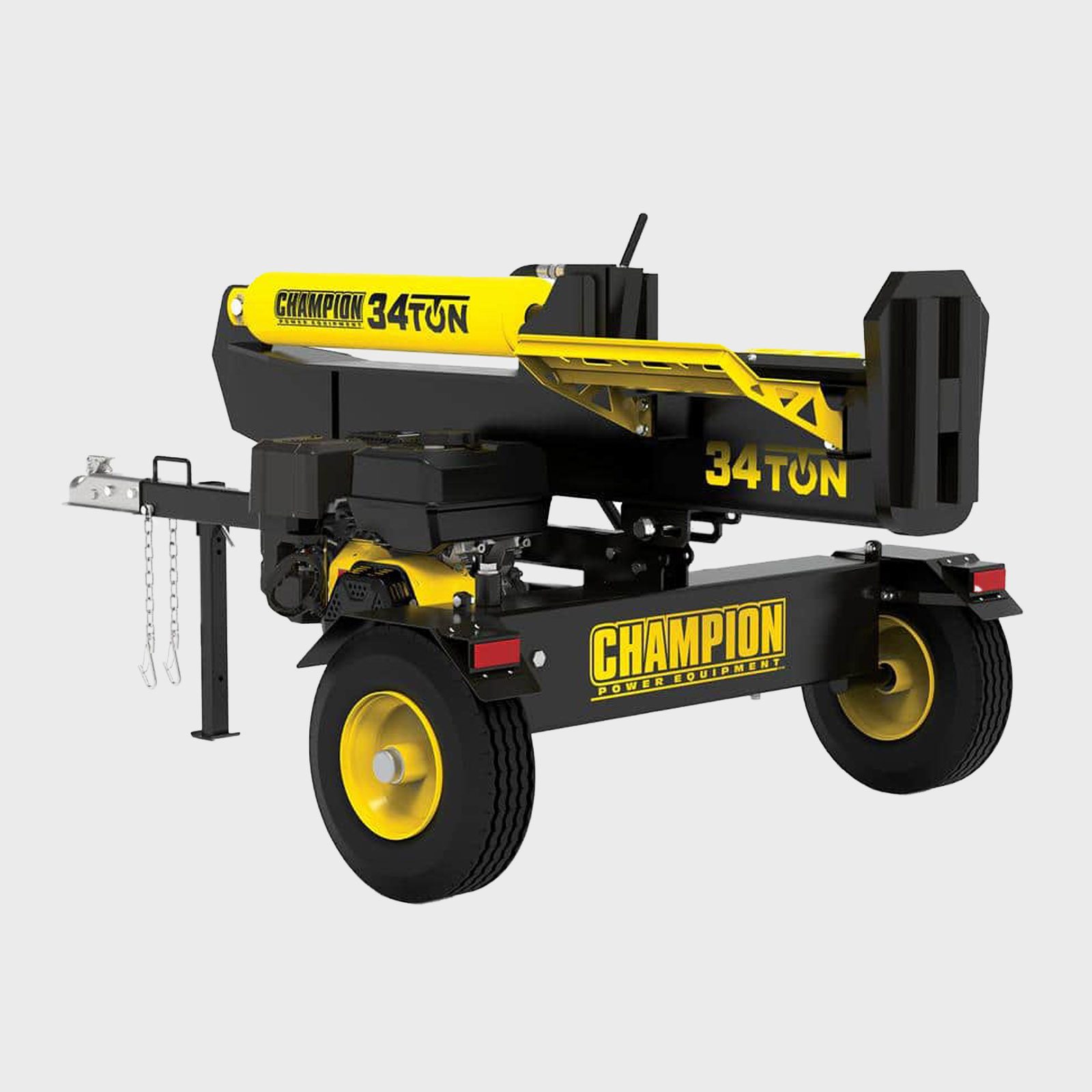
Best Heavy Duty Gas Powered Log Splitter
If log splitters are all about power, as Christofora says, then they’re all about the Champion 34-Ton hydraulic gas powered model. This popular and well-reviewed workhorse can handle 24-inch, 100-pound logs with ease.
You have to tow this high-production log splitter to the work site. But once there, its 16-second auto return cycle allows it to split 200 logs per hour. It operates in vertical and horizontal positions. When horizontal, the log catcher saves your back by keeping logs within easy reach.
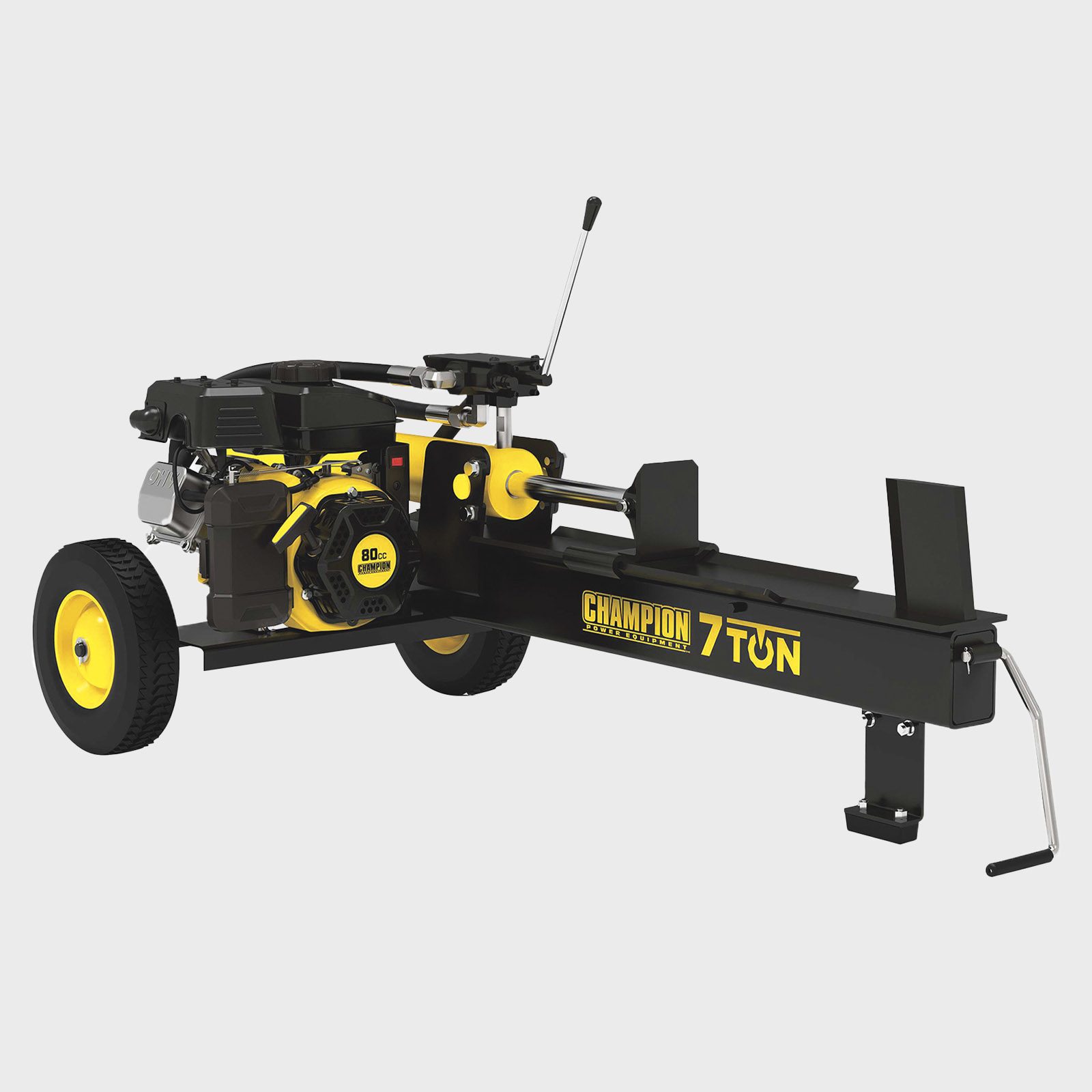
Best Light-Duty Gas-Powered Log Splitter
A smaller version of the 34-ton model, the Champion Seven-Ton Log Splitter is towable but also light enough to move around manually. It handles smaller logs than the more powerful version (up to 19 inches long and 50 pounds in weight), and it has a slightly longer return cycle and smaller production rate (180 logs per hour).
This Champion model operates only in the horizontal position. But because it also has an integrated log catcher, you don’t have to worry about your back.
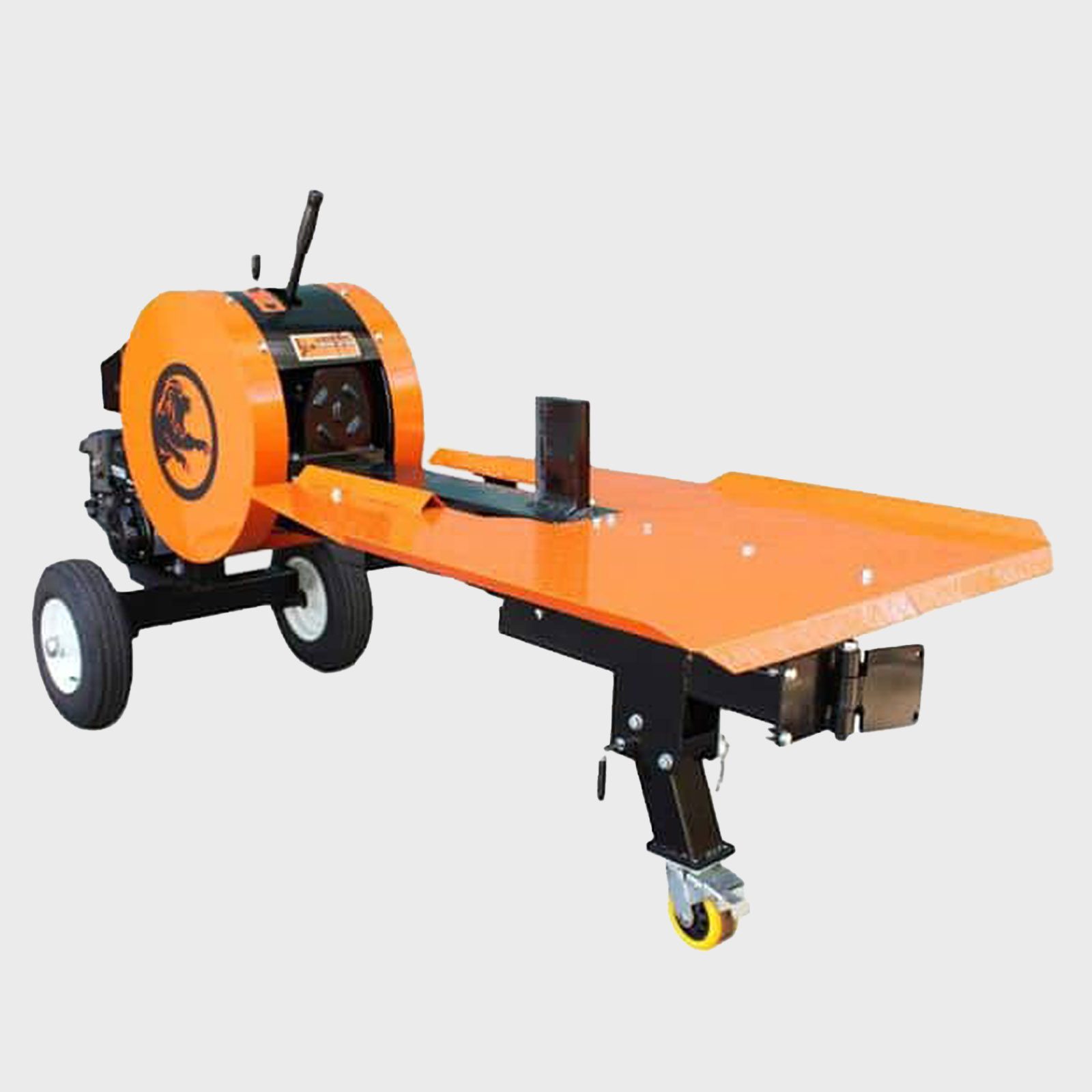
Best Kinetic Log Splitter
A kinetic log splitter lacks a hydraulic system. Instead, it uses flywheels to convert engine power into a burst of splitting action. The Kohler Power King develops 42 tons of splitting force, and its cycle time a blazing one second.
The Kohler log splitter can handle 21-inch-long by 23-inch-diameter logs. It works best with softwood logs and may stall out while splitting dense hardwoods. It’s also expensive. But if you have stacks and stacks of fir or pine logs to turn into firewood, this splitter will do it quickly.
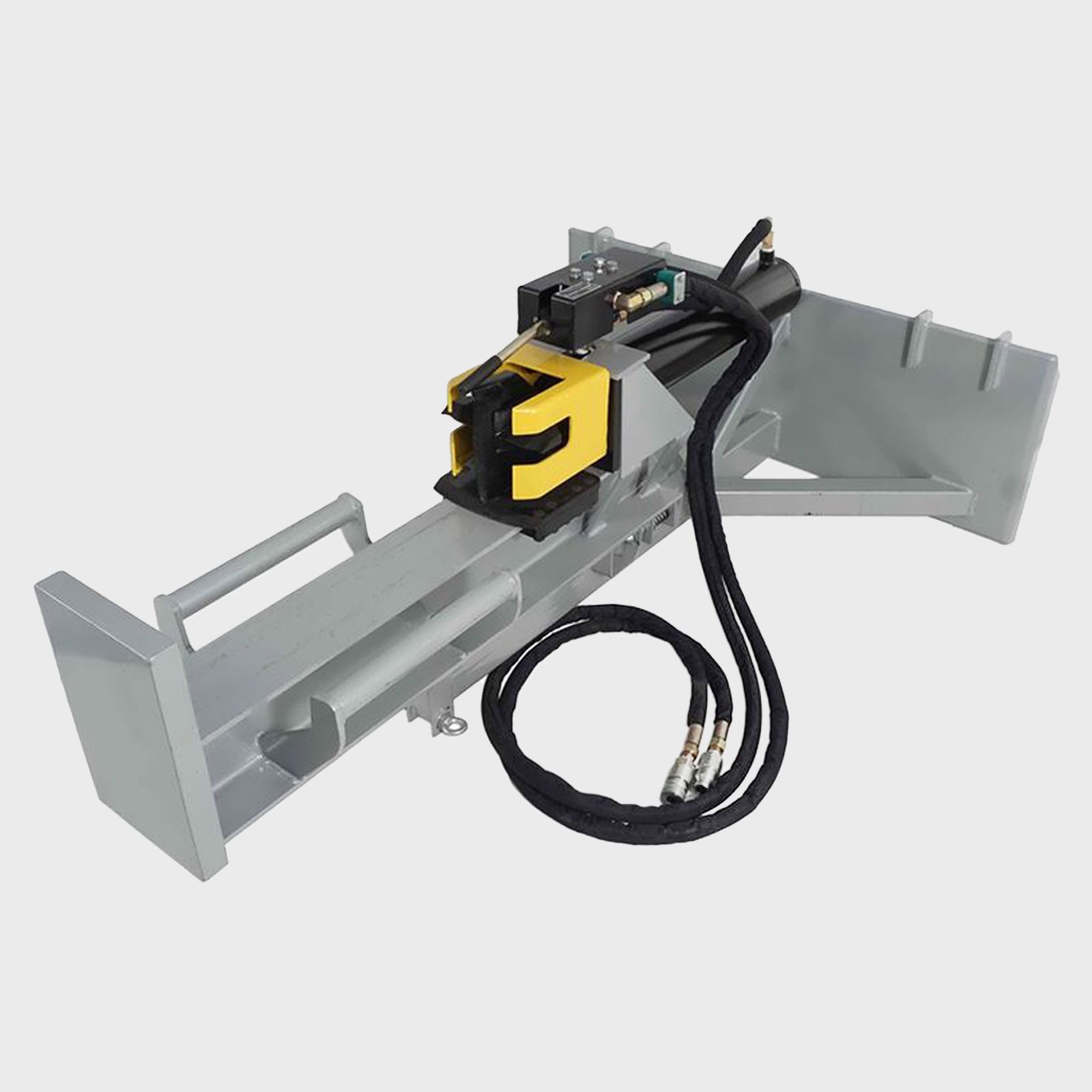
Best Tractor-Mount Log Splitter
If your tractor has a Universal Skid Steer Quick Attach (SSQA) mounting system and the hydraulic system delivers at least 10 gallons per minute (GPM) at 3,000 pounds per square inch (psi), this 30-Ton Skid Steer Log Splitter Attachment turns your tractor into a high-production log splitting unit.
This splitter attachment operates in the horizontal and vertical position and handles logs up to 24 inches long. The four-way blade splits dense hardwood logs into quarters, not halves, and cuts through knots as if they weren’t there.

